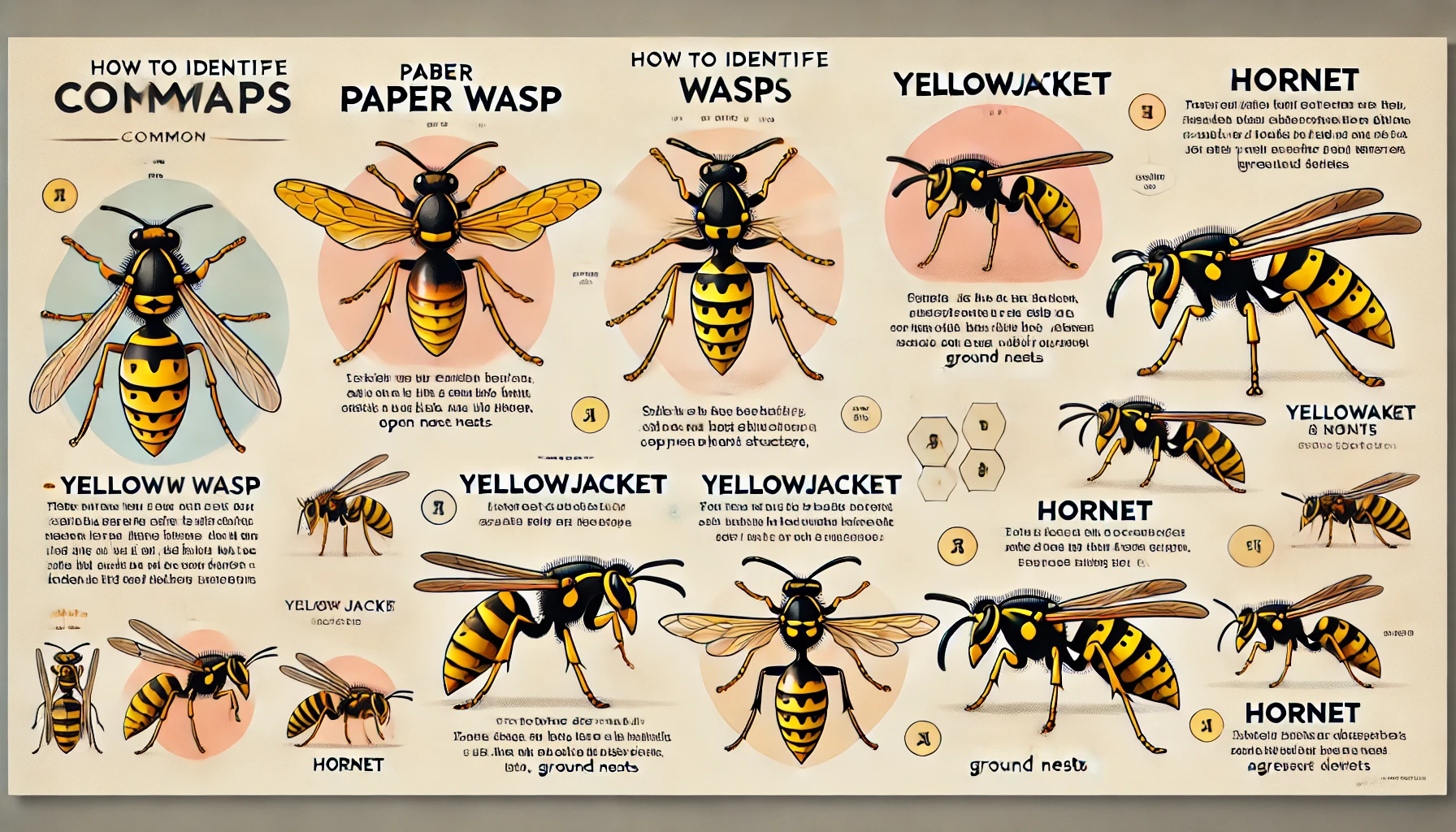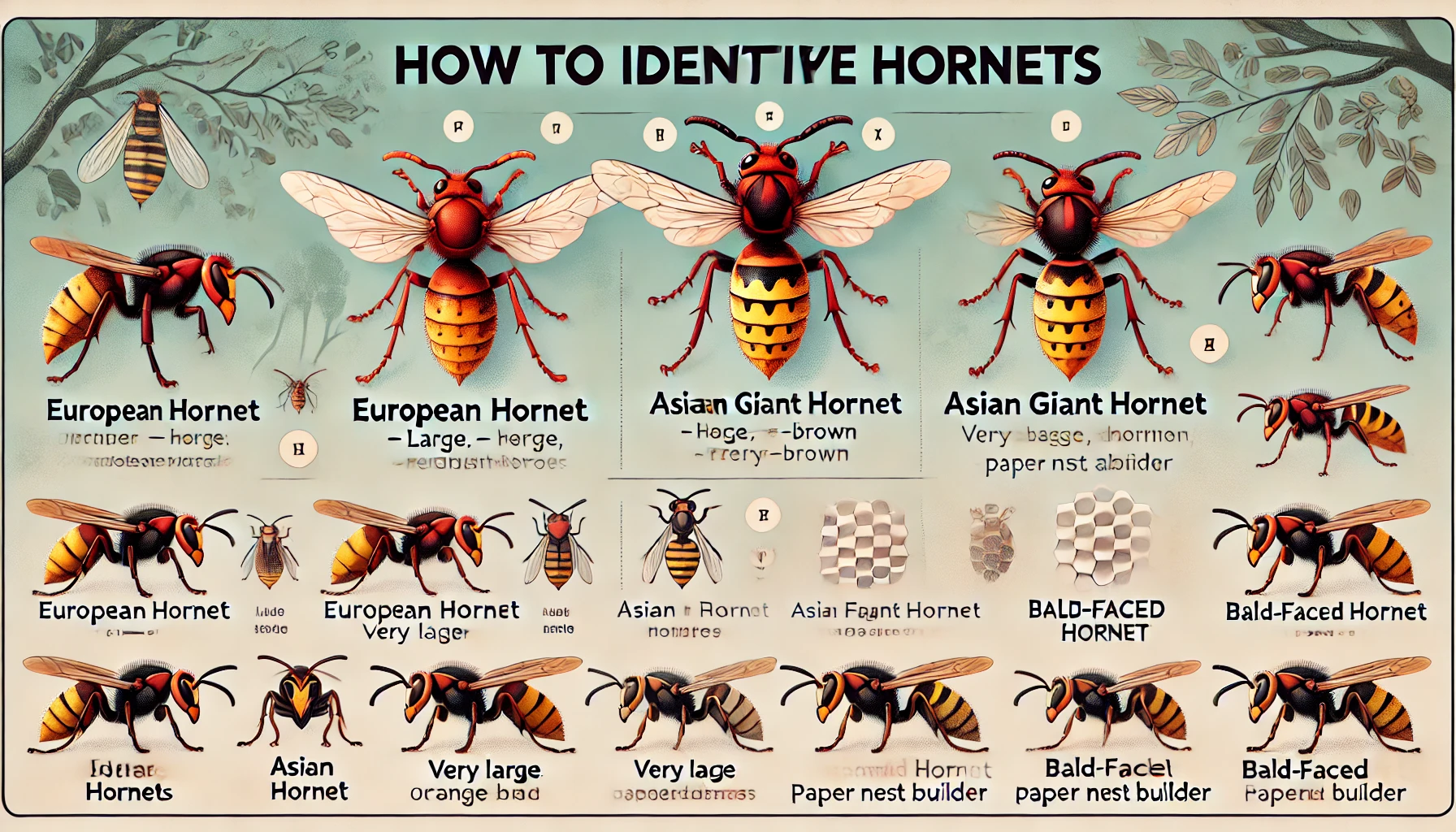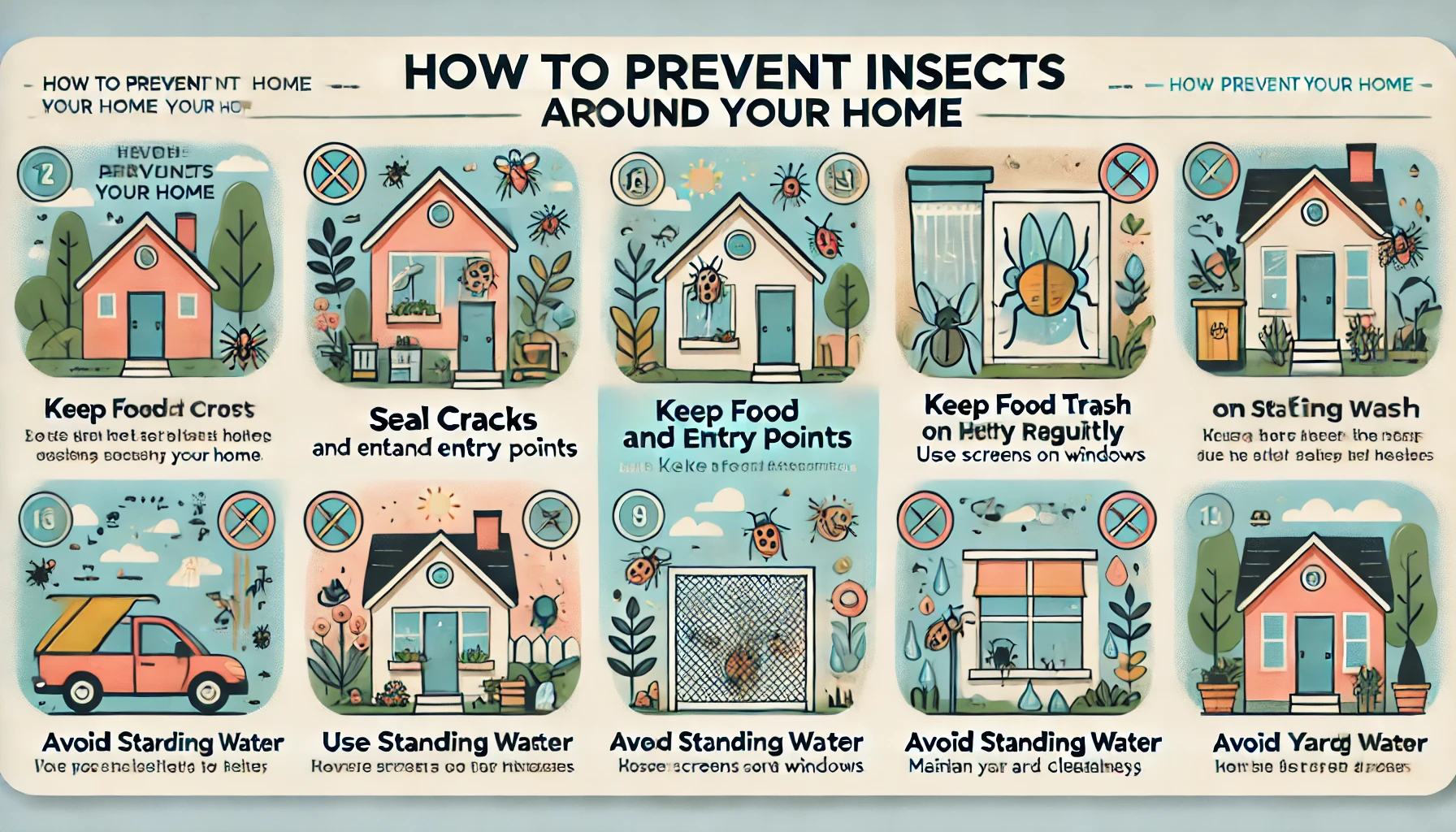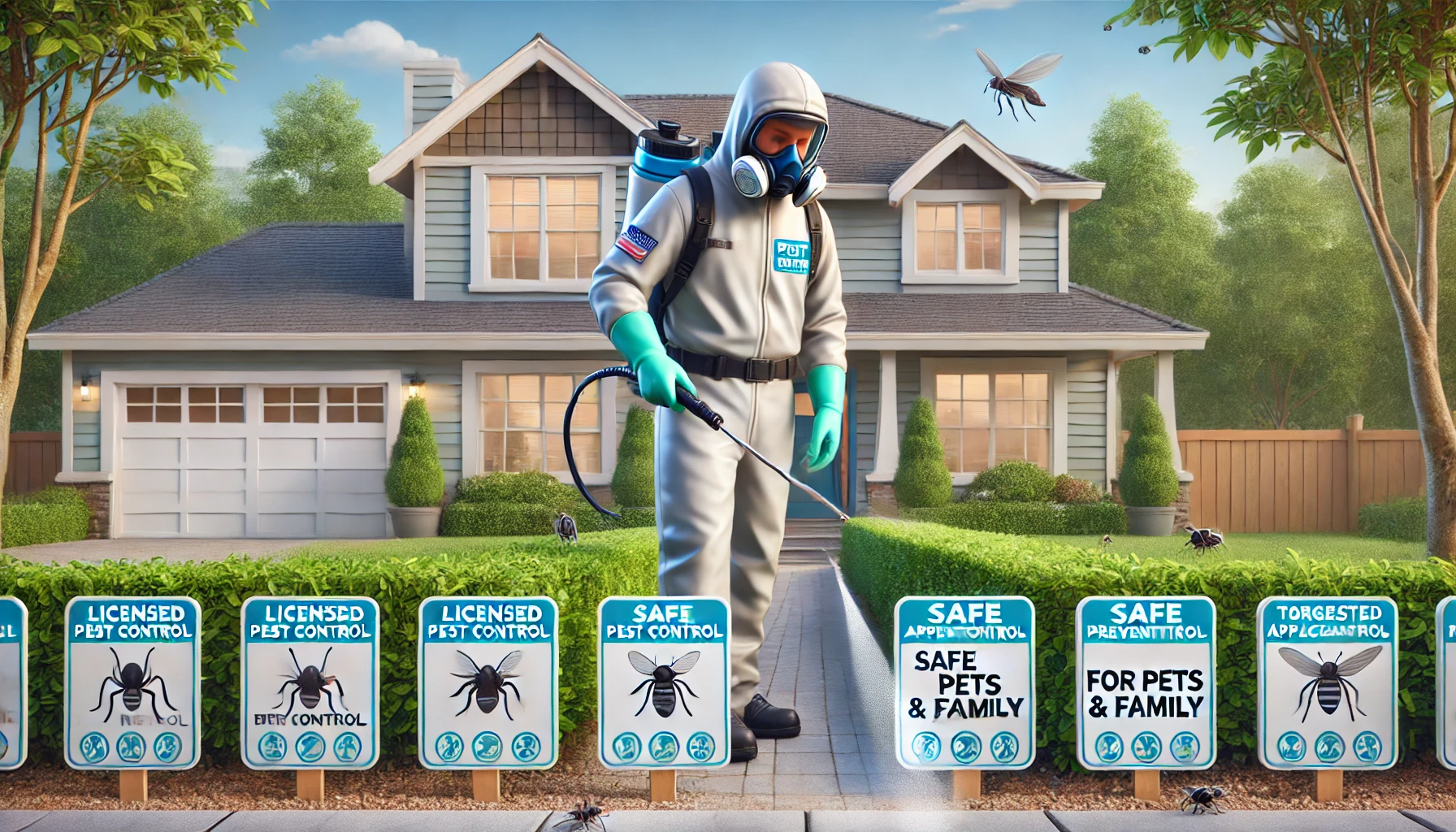Key Takeaways
- Accurate identification of stinging insects helps manage risks and responses.
- Bees are beneficial and rarely aggressive, while wasps and hornets can be highly defensive.
- Recognizing different nests provides essential clues to insect identification.
- Quick first aid responses can greatly reduce discomfort and health risks after stings.
- Proactive prevention and knowing when to seek professional help keep your home safer.
 Warm weather is fantastic—barbecues, pool days, gardening—you know what I mean. But along with all the sunshine come some not-so-welcome guests. You know the ones—bees buzzing around flowers, wasps sneaking around soda cans, and hornets lurking suspiciously close to the porch. Most of these insects mean no harm, but identifying them is crucial because the wrong move could lead to a painful sting or even a trip to the emergency room.
Warm weather is fantastic—barbecues, pool days, gardening—you know what I mean. But along with all the sunshine come some not-so-welcome guests. You know the ones—bees buzzing around flowers, wasps sneaking around soda cans, and hornets lurking suspiciously close to the porch. Most of these insects mean no harm, but identifying them is crucial because the wrong move could lead to a painful sting or even a trip to the emergency room.
Why Bother Identifying Stinging Insects Anyway?
You might think, “An insect is an insect, right?” Well, not exactly. Every year, over half a million Americans are in emergency rooms thanks to insect stings. Some folks experience mild discomfort, while others face severe allergic reactions, making quick and accurate identification a big deal. The good news? Once you can tell these insects apart, you’ll know exactly when to keep your distance and when it’s okay to relax.

Not getting a solution?
Get your free pest control estimate today!Common Stinging Insects You’ll See Around Your Yard
Let’s Talk Bees Bees are like your garden’s best friends—pollinating flowers and keeping things blooming. They’re generally peaceful, minding their own business unless provoked.Honey Bees
- Fuzzy golden bodies with classic black stripes.
- Create waxy hives often found in hollow trees, walls, or specially built bee boxes.
- They’re gentle souls—usually sting just once and then, sadly, it’s game over for them.
Bumblebees
- Big, round, and super fuzzy, almost adorable.
- Nest underground or beneath piles of leaves or grass.
- They can sting repeatedly, but truthfully, they’d rather not.
Carpenter Bees
- Think bumblebee, but shinier and hairless on their bellies.
- Drill neat, circular holes into wooden decks or siding—watch out for structural damage!
- Rarely aggressive, but they can be a bit destructive.

What’s Up With Wasps?
Wasps might not win any popularity contests, honestly, because they’re territorial and quick-tempered.Paper Wasps
- Slender bodies with smooth skin and an exaggerated waistline.
- Build those umbrella-shaped nests under porches or eaves.
- Aggressive when their nest feels threatened and will sting multiple times—ouch!
Yellow Jackets
- Bright yellow and black, a bit smaller, and angrier than your average wasp.
- Often nest underground, in logs, or wall cavities.
- Extremely protective and aggressive, especially in late summer.
Mud Daubers
- Long, thin, usually black or metallic blue with a super slender waist.
- Build curious mud tube nests tucked in corners of garages or attics.
- Generally chill and only sting if directly bothered.

Hornets—The Big Bosses
Hornets are basically wasps on steroids. Seriously, they’re bigger, more defensive, and their stings pack a punch.Bald-Faced Hornets
- Black with striking white markings on their faces and bodies.
- Craft large, enclosed paper nests hanging ominously from branches or bushes.
- Fiercely defensive; you really don’t want to mess with them.
European Hornets
- Huge, reddish-brown with yellow-striped abdomens—pretty intimidating.
- Nest in hollow spaces like trees, barns, or even walls.
- Known to patrol aggressively both day and night.
Identifying Nests Helps, Big Time
Not sure exactly what insect you’re seeing? Checking out their nests can give you a pretty clear clue:Common Nest Types and Where to Find Them
-
Bee Hives: Waxy hexagonal cells found tucked away in safe spots like tree hollows or attics.
-
Wasp Nests: Papery, umbrella-shaped structures usually hanging under eaves or porches.
-
Yellow Jacket Nests: Hidden underground or in walls, marked by tiny entry holes.
-
Hornet Nests: Large, enclosed, football-shaped nests suspended in trees or shrubs.
-
Mud Dauber Nests: Small mud tubes built onto sheltered walls or ceilings.
Aggression Levels Matter—Trust Me
Knowing who’s chill and who’s ready to fight helps you stay safe:Stinging Insect Aggression Levels
-
Very Aggressive: Yellow jackets, bald-faced hornets, and European hornets are quick to defend their nests and sting repeatedly.
-
Somewhat Aggressive: Paper wasps can become defensive near their nests but are generally less aggressive than hornets.
-
Mostly Harmless: Honey bees, bumblebees, carpenter bees, and mud daubers rarely sting unless provoked.
Ouch! Got Stung? Here’s What You Should Do
If the worst happens, acting fast helps reduce discomfort:How to Treat a Bee Sting
-
Remove the Stinger: Quickly scrape it off with a fingernail or card—don’t squeeze, as that can inject more venom.
-
Clean the Area: Use soap and warm water to prevent infection at the sting site.
-
Apply Ice or Cold Compress: Reduces swelling and helps soothe pain after the sting.
-
Use Antihistamines or Creams: Relieve itching and irritation with antihistamines or hydrocortisone.
-
Monitor for Reactions: Seek emergency care if there are signs of a severe allergic reaction like difficulty breathing or facial swelling.

Tips to Prevent Unwanted Encounters
Prevention is often easier than dealing with an angry swarm. Here are some practical tips:- Regularly inspect your yard and home exterior for signs of nests, especially in spring and summer.
- Cover food and beverages during outdoor activities to avoid attracting insects.
- Seal cracks and crevices in walls or foundations where insects could build nests.
- Keep garbage bins tightly sealed and far from entry points of your home.
- Limit sweet-smelling flowers near high-traffic areas like patios or pools.

When It’s Time to Call in the Pros
A little DIY can be fine, but honestly, some situations scream for professional help:- Seeing large, aggressive groups of insects.
- Finding nests in tricky or hard-to-access areas.
- Dealing with repeated invasions despite your best efforts.
Visit our Species, Control, and DIY Guide sections for additional resources on insects and ways to tackle a insects infestation.





